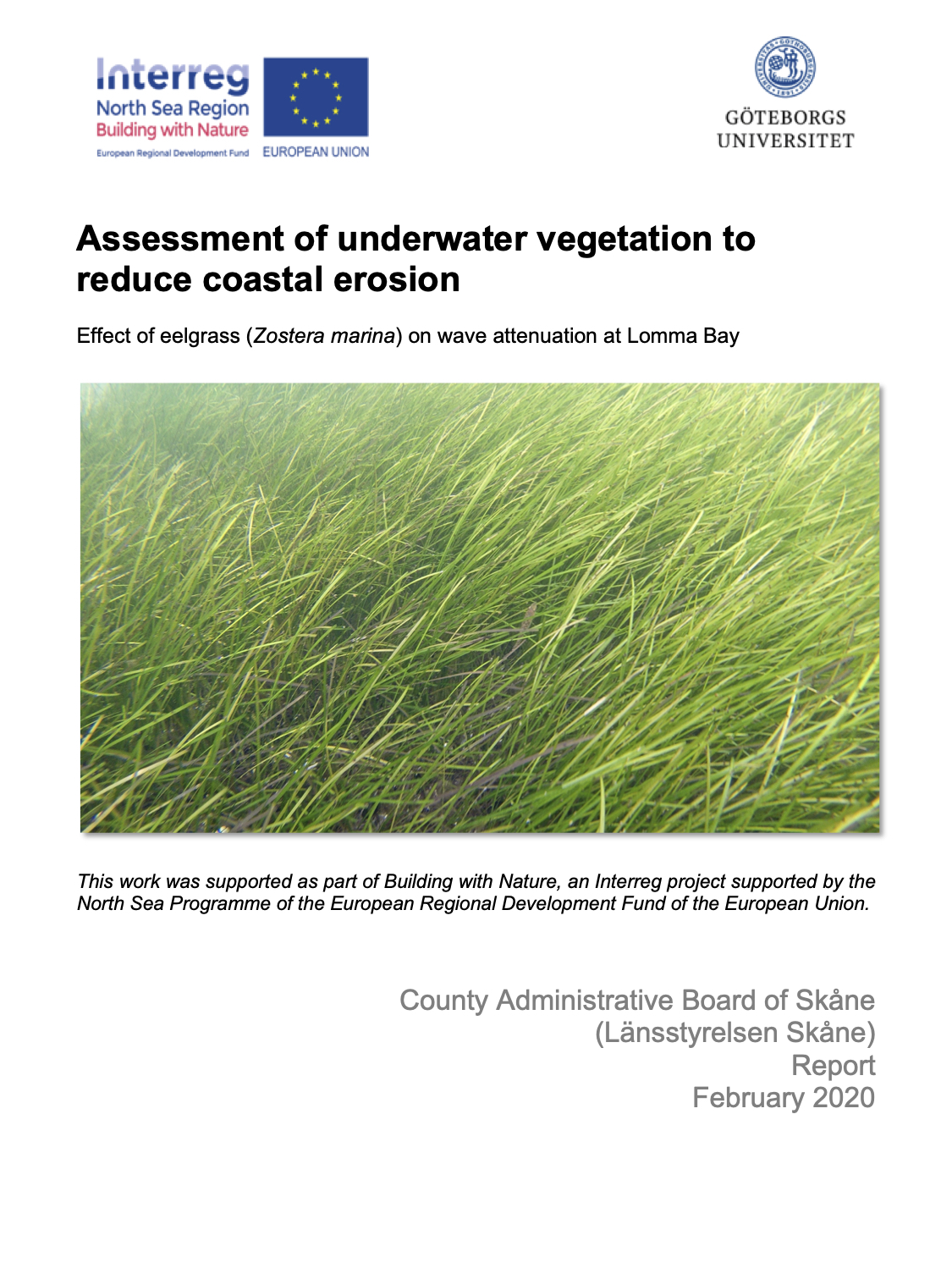Abstract
Coastal erosion is a growing problem that is predicted to get worse with climate change and the associated sea-level rise and extreme weather events. Eelgrass is presently discussed as a natural sustainable new method for coastal protection compared to traditional not sustainable beach nourishment. However, large-scale field studies assessing how seagrass meadows affect transport of sand and beach erosion are currently lacking. It is therefore unclear if or how seagrass affect wave attenuation and beach erosion, and under what environmental conditions they can reduce beach erosion, and how meadow characteristics affect this capacity.
In this project, we quantify how eelgrass meadows (Zostera marina L.) attenuate wave conditions in Skåne, southern Sweden, a region with growing problems with coastal erosion. Wave gauges and a current flow meter were deployed in Lomma bay during 3 months (2-Aug to 5-Nov) in two sites with high and low plant density. In addition, eelgrass cover was measured in the field using an underwater drop-video camera. Three storms were recorded during the deployment where sea level also raised above average. Results show that wave heights decrease as it propagates through the meadow. The wave reduction during storm events was on average 35-40% at the eelgrass dense site while at the eelgrass sparse site was 5-10%. A simple model was built to calculate the wave decay over the meadow, suggesting that the main cause for wave reduction were the different drag effects caused by the dense and sparse vegetation.
Our results also showed that sand from the artificial beach located in the south of the Lomma port seems to have been transported 300 m to deeper water (3m depth). In this section of Lomma Bay, wave decay was also smaller since the eelgrass cover was low. This sand could potentially affect the eelgrass shallow limit even further by burying the plants. Further work could be focus to assess the effect of the artificial beach on the shallow limit of eelgrass.
This project provides information to support coastal managers working with coastal protection and conservation of eelgrass to quantify the role of eelgrass meadows on wave damping. These results could be later implemented in the design of innovative conservation and restoration management strategies to reduce coastal erosion.
ISBN: 978-91-7675-186-2, Report number: 2020:7










